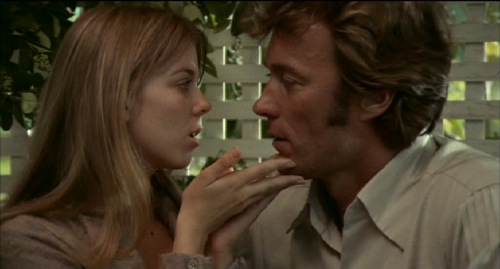I was not aware of the 1971 film “The Beguiled” until the release of Sofia Coppola’s 2017 remake of the Gothic thriller. The original was the third film featuring Clint Eastwood as star and Don Siegel as director. Their most popular collaboration is “Dirty Harry,” released the same year as “The Beguiled.”
“The Beguiled” was an unusual project for a director and actor best known for their action movies. In fact, Siegel believed the movie’s failure at the box office was due to Universal Pictures’ marketing it as another Eastwood actioner. But their work on “The Beguiled” showed there was much more to their storytelling talent than showing the hard edges of testosterone-laden crime and punishment. They don’t abandon crime and punishment in “The Beguiled,” but women are running the action as the movie examines lust, loneliness and Southern sensibilities.
I also find it interesting to see how men perceive female behavior and motivations; the material is based on a novel by Thomas Cullinan. Yet we get to see those perceptions through the lens of screenplays written or co-written by women in both the 1971 and the 2017 adaptation. The 1971 film was written by Albert Maltz and Irene Kamp, both using pseudonyms, and the 2017 version was written by Sofia Coppola.
The story is simple enough. The women of a Confederate boarding school decide to harbor an attractive, wounded Union soldier near the end of the Civil War. Their isolation makes him especially predatory and makes them especially susceptible to his charms. It becomes a cat-and-mouse situation – but do the women represent cats or mice?
It’s an interesting story, and both films are well-made, but I’m afraid my biggest concern is the utter absence of heat in the Coppola version. One of the most enjoyable aspects of the story is the sexual tension and potential for release between the wounded soldier and the women at the school. Although I don’t think of Clint Eastwood as a sex symbol, but I do find him sexy in some of his early films, and this is one of them. His potential paramours in “The Beguiled” include Geraldine Page as the stern and stifled headmistress; Elizabeth Hartman as a chaste teacher; Jo Ann Harris as the minx; and Mae Mercer as a wise servant. All four actresses are excellent, and Eastwood generates considerable heat with all of them.
So I was expecting major fireworks in the 2017 remake, especially since Colin Farrell, essentially sex incarnate as far as I’m concerned, plays the lustful soldier. There’s a scene in the 2002 thriller “Minority Report” where Farrell quickly steps in front of Kathryn Morris to stop her from walking away from him, and the sex appeal he exuded in that completely nonsexual moment literally made me gasp.
Both movies feature sex scenes, but Coppola chose to leave a lot more to the imagination as far as the multiple seductions the soldier attempted – seductions that were far more important to the story than any consummation. There appeared to be a chemistry problem in her version as well. There was no chemistry between Farrell and Nicole Kidman and Elle Fanning, and only minimal chemistry between Farrell and Kirsten Dunst.
Coppola won the best director prize at the Cannes Film Festival, and her film is a lovely, austere, ethereal meditation on how vulnerable creatures are not necessarily harmless and the true nature of femmes fatale. She also keeps the war at bay, focusing strictly on the women and school girls and the soldier. But her film lacks the earthiness and realism that makes the original 1971 version so erotic in its crimes, understandably culminating in the extreme passions that insist on punishment in the end.







